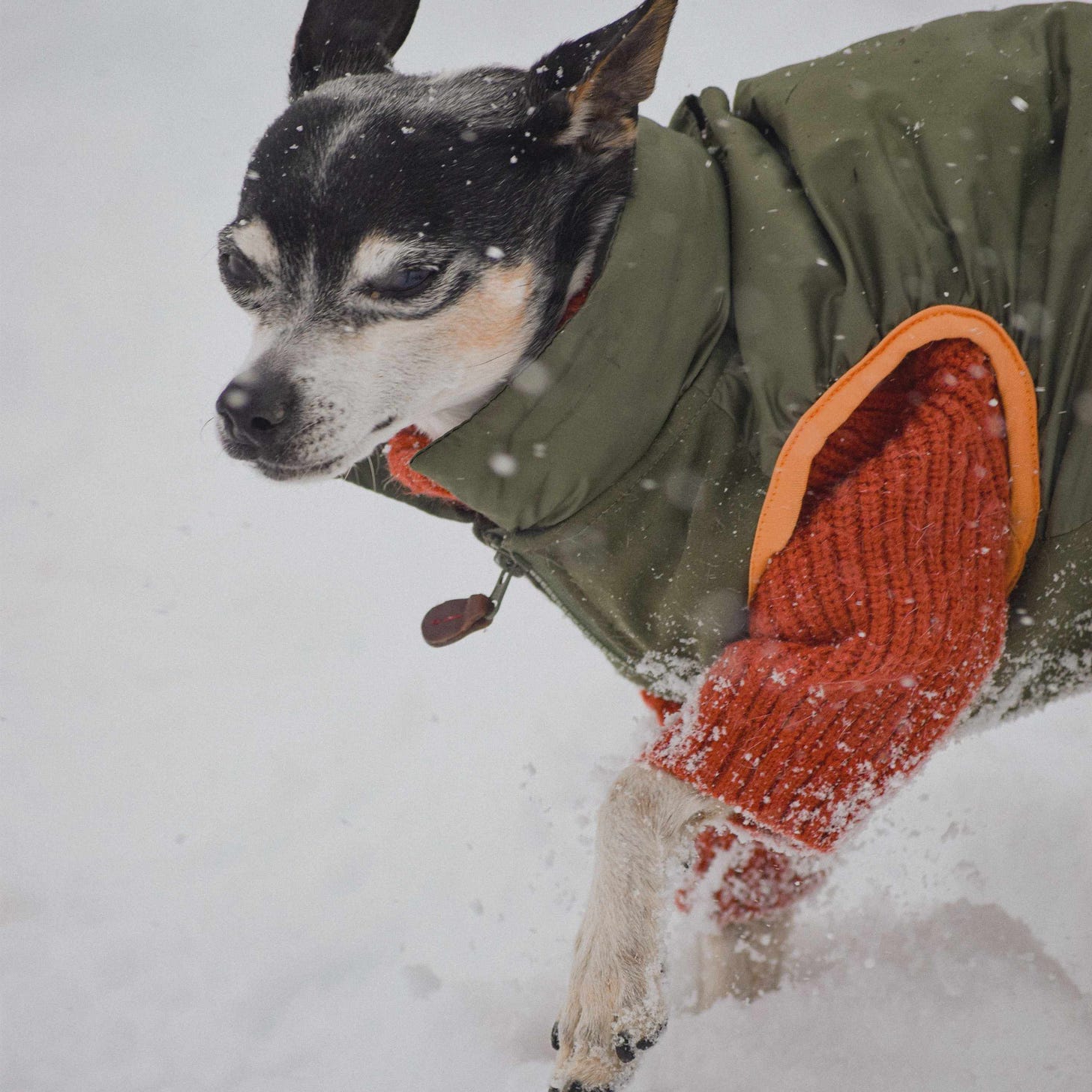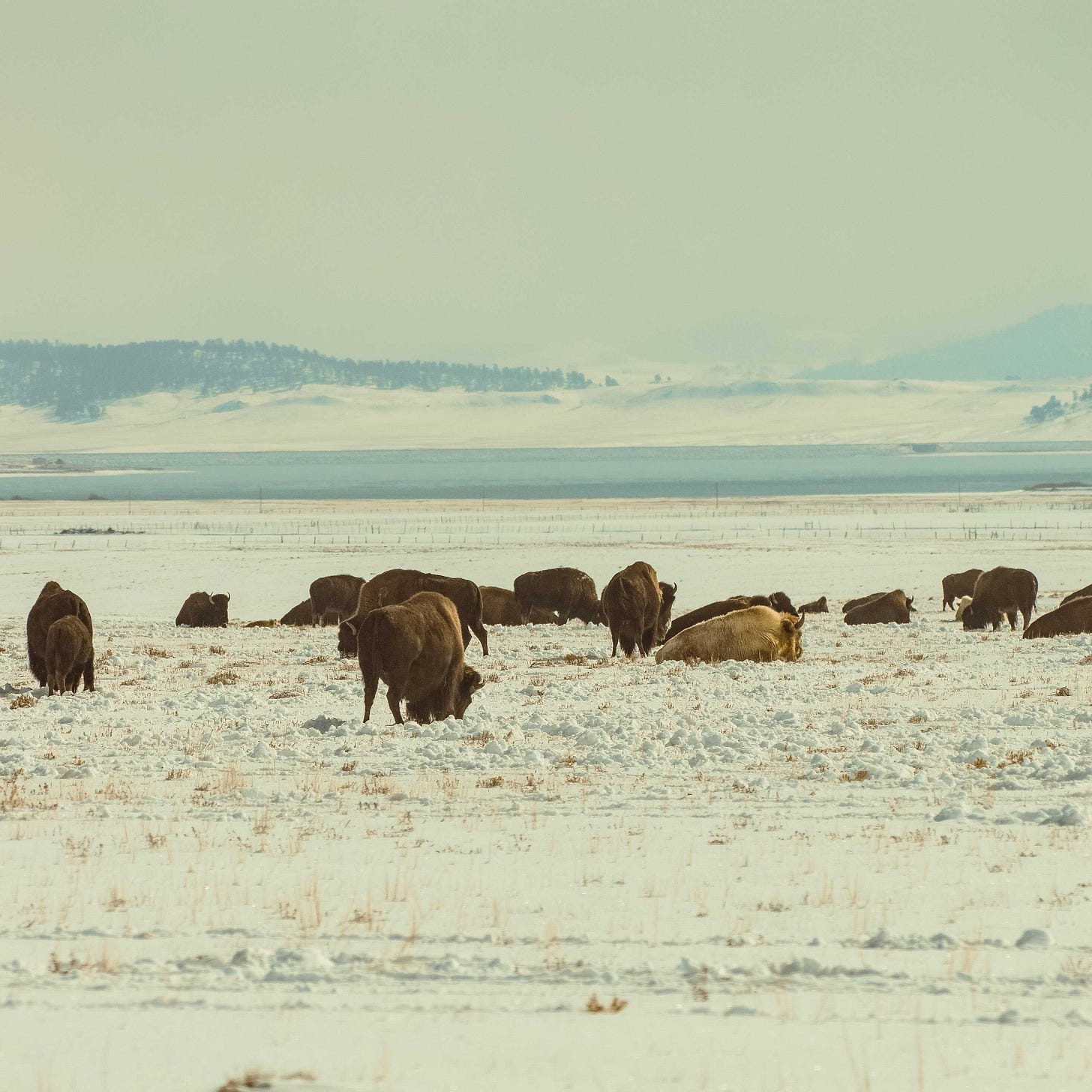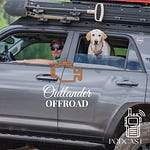At a friend’s housewarming party this last weekend, I met other off-roaders at various levels in their overlanding journeys and found out who was really a fair-weather camper.
It was great being surrounded by five other Lexus GX owners with their various builds. I am sure the neighbors thought we were in an off-road car cult.
The group even included the owner of Helivue Designs, who creates long travel fuel tanks for off-road vehicles.
It is fun to meet passionate off-roaders and GX owners who are building and designing things to make off-roading more enjoyable.
As a designer, meeting people who are also creating really fuels my fire when it comes to actually making the things that are floating around in my head all of the time.
Fair Weather Campers
While sitting around their new fire pit in our own camp chairs, we discussed our average fuel mileage and our winter camp setups.
We all laughed at the low average gas mileage and discussed what trips we had taken where we might have needed a long-range fuel tank.
I will discuss those longer trips and destinations in another post.
It seems the more prepared you are and the more equipment you put on your vehicle, the more it weighs.
While we have wanted a long-range fuel tank for a long time, we have been concerned about adding more weight to our already bulbous build.
My excitement over meeting people with similar interests and hobbies had me asking when we could all convene at camp.
My questions were met with sad explanations and stories about concerns over winter camping.
Questioning the Cold
Besides Rocky Trail Roamers, I don’t know many off-roaders who continue camping during the late fall and winter season here in the Rockies.
A couple of members of my captive audience described uncomfortable nights with a buddy heater, a ground tent, and an air mattress.
Another described sleeping in his car.
Some said that they just don’t like to camp in the winter and even remove their tent from their vehicle until spring.
One agreed with me that winter camping is magical because no one else is out, and the camp is uniquely quiet with snow, and the campfire means so much more.
The major question I was asked at Overland Expo was how to stay warm in the winter, and this group seemed eager to understand what might expand their camping season.
So without further ado and storytelling. See my field guide below on tips for staying warm while overlanding and camping this fall and winter season.
Watch the video or read my winter camping and off-road guide below:
Made with Notebook LM
Field Guide to Cold Weather Camping - Part 1
Step 1: How to Scout in the Spring, Summer, and Early Fall
One of the most overlooked steps toward a safe, comfortable, and even luxurious winter camp is done months before the first frost ever hits.
Scouting in warmer months gives you time to understand the terrain without the added challenge of snow, ice, or limited daylight.
When you are fair-weather camping, treat each drive or camping trip as a reconnaissance mission.
If you can’t scout or are in an area you are unfamiliar with, use your mapping app to look at the change in elevation and trail ratings.
How to identify a good cold-weather campsite:
Elevation and Exposure: where does the sun linger late in the afternoon? Which ridges or valleys trap cold air at night? South-facing slopes tend to hold warmth longer.
Wind Direction: Notice how the trees lean or where the dust swirls on the road. This reveals the patterns of prevailing winds that can make or break a winter setup.
Accessibility: What roads or trails might be plowed, gated, or impassable once snow falls? Mark alternative routes and note which forest roads are seasonal.
Terrain Texture: Hard-packed soil, rocky clearings, or dense pine needles all behave differently when frozen. A summer site that drains well may become icy; a sandy flat may stay surprisingly dry.
Things to note on your mapping app or field notebook:
Windbreaks such as tree clusters, rock faces, and natural berms.
Elevated clearings that won’t flood with snowmelt
Proximity to firewood
Visual Charm - a scenic winter view is worth the extra planning
Exposure to Southern Light, so that you maximize the most daylight
Flat level ground that is in lower general elevations
Easy access with flat or mostly level roads to get in and out
Shorter distances to paved roads make it easier to get out when snow or ice has formed overnight
Step 2: Recovery Equipment
Winter can test your vehicle’s capabilities like no other condition. Even a mild snow squall can turn a casual drive and late fall camping trip into a slow-motion slide.
Trust me, we have had the experience of being too heavy to climb up a road, only to have to spend hours tethering our way down a mountain to anything we could attach our rig to.
Core Winter Recovery Kit:
Traction Boards: Wide, aggressive teeth to bite into snow or semi-frozen slush. Choose versions that won’t crack under sub-zero temps.
Shovel: One is good, two are better. Choose a metal-bladed option with a telescoping handle if you don’t have much room for storage.
Plastic may shatter in the bitter cold. Consider changing out your fair-weather shovel for a square, shaped snow shovel.
Recovery straps and soft shackles: Rated for your vehicle’s weight, kept in a dry or canvas bag so they don’t freeze stiff.
It is recommended to inspect your recovery equipment every six months, look for obvious physical wear and fraying.
Make sure you and your passengers know how to use and connect them to points on your vehicle.
We only use synthetic straps to avoid the dangers of metal lines breaking and causing an injury by flying back from being in tension.
Don’t forget to lay these out when you get home to dry out in a warm area.
Winch + Tree Saver Strap: Again, synthetic lines are preferred in colder climates - it is lighter, safer, and resist icing better than steel cable.
Tire repair kit + inflator: Cold air drops the tire pressure dramatically. Bring an air compressor if you don’t have one on board, and check often.
Portable Jump Starter: Batteries are less efficient in the cold and lose up to 50% capacity below freezing.
A lithium unit that doubles as a power bank is worth its weight in gold. We keep one in every single vehicle and check them often to confirm they are charged before doing any winter travel.
Traction Aids: Chains or studded snow socks for regions with deep freeze cycles are recommended.
Smart add-ons for Comfort and Safety
Here are some less essential but amazing additions to your winter comfort and safety kit:
Insulated recovery gloves: keep dexterity without frostbite
Headlamp with red-light mode: preserves night vision while working in snow glare.
Thermal blankets or bivy: for unexpected waits
Vehicle traction mat: keeps you out of the mud and kneeling in comfort while connecting winch lines
Storage logic: mount recovery gear low and accessible; in emergencies, you don’t want to unpack your entire rig to find a strap. We keep ours behind the driver’s and passenger seats at all times.
Mindset: Calm, Capable, and Collected
Every winter recovery is a meditation and preparation.
Take your time, keep your body temperature steady, hydrate, and breathe.
The wilderness respects those who move with intention and deliberation.
Step 3: The Cold-Weather Camp Setup
Choose your campsite wisely. Even a few feet in elevation or a subtle wind break can make the difference between comfort and cold misery.
Seek natural shelter: Place your tent or vehicle on the leeward side of trees, ridgelines, or rock formations. They block prevailing winds and create microclimates that retain warmth.
Mind the sun: Face camp toward the Southeast to catch early morning light and faster thaw.
Avoid Cold Sinks: Low-lying areas or dry creek beds collect frigid air. Snow can also melt and refreeze into ice traps.
Use the terrain: A gentle slope helps with drainage if temperatures fluctuate above freezing.
Build from the Ground Up
If you are ground-tent camping:
Ground insulation: Use a footprint, foam mat, or layered tarp to block conductive heat loss
Elevate gear: keep sleeping bags and clothing off frozen surfaces when possible
Snow platforms: If camping on snow, tamp it down first to create a solid, level surface that won’t collapse under your body heat overnight
Closed-cell foam mat: a lightweight, dense mat that provides insulation and adds structure under softer camping pads.
Reflective ground sheet: a thin radiant barrier bounces heat upward. Great beneath foam pads or rugs in extreme cold.
Rug or carpet remnant: for multi-day or base camps, a small woven rug instantly adds insulation and reduces drafts.
The right R value: sleeping pads and bags should have the proper R value. Consider ones with an R 4-5 for late fall or early winter and 6+ for true winter camping.
The right combination: combine a foam pad with an insulated air pad for the best results.
Bedding for all types of tents
Sleeping bag and comforter:
Down: light, compressible, temperature regulating. Best for dry cold.
Synthetic: retains warmth when damp and dries quickly.
Hybrid or Overbag systems: Use a lighter bag inside a larger cold-rated shell for flexible layering.
Always choose a bag rated 10-15°F degrees colder than the lowest forecast
Shelter Systems: Canvas, Nylon, or Hybrid
Canvas tents: heavy but durable, breathable, and radiant with old-world charm. Perfect for a stove jack and small wood burner.
Four-season nylon tents: lightweight, weather-sealed, fast to deploy. Pair with insulated ground pads and double-walled construction.
Hybrid setup: rooftop tents or vehicle annexes combine mobility with warmth, a hallmark of the modern overlander.
Ventilation is Key
A well-sealed tent without airflow traps condensation, soaking insulation, and lowering body temperature overnight. Balance warmth with breathability.
It is counterintuitive, but leave your vents as open as possible. We have even slept with our window almost all the way down to keep our rooftop tent from filling with moisture overnight.
Also, think about sleep proximity. It is great to share your tent with a partner, friend, or even canine, but their breath can end up collecting and freezing on you while you sleep.
Make sure your pets under the blanket can breathe outside of your sleeping setup.
I have woken up many times with Justin’s breath frozen in my hair.
More about Cold Weather Camping to Come
True comfort in winter camping isn’t about abundance but intentionality.
Now that you have learned how to pick a camp spot, how to decide on a tent setup, and how to layer your sleeping arrangements, we will cover food storage, hydration, clothing, heaters, and more cold-weather camping tips.
We also cover why having an extended fuel tank might be worth the extra weight for winter camping.
In our next post, we will cover the rest of the cold-weather camping field guide. If this article and podcast inspire you to get out on the trail, no matter the weather, follow along for more trail stories, gear suggestions, and overland wisdom.















